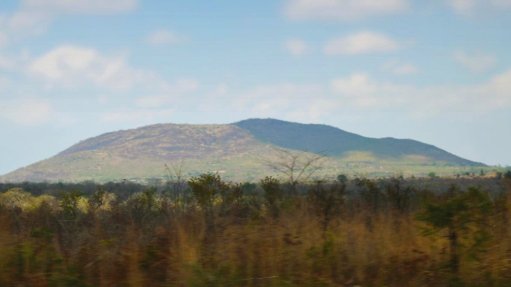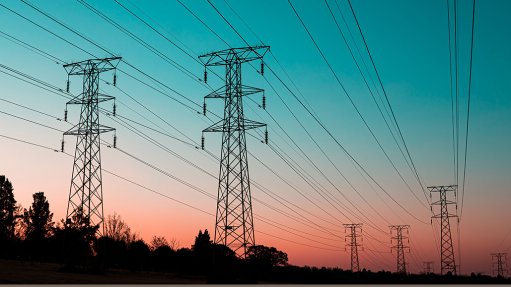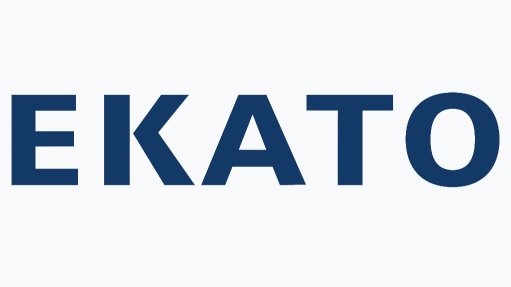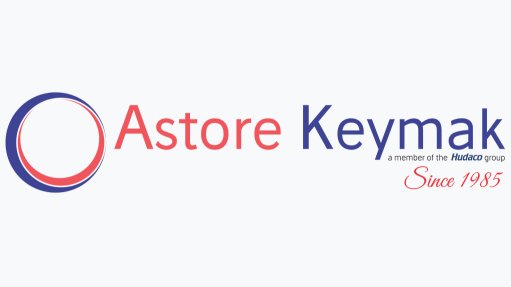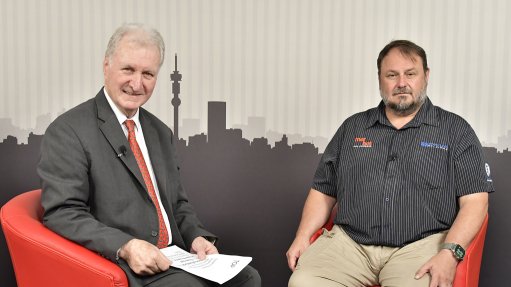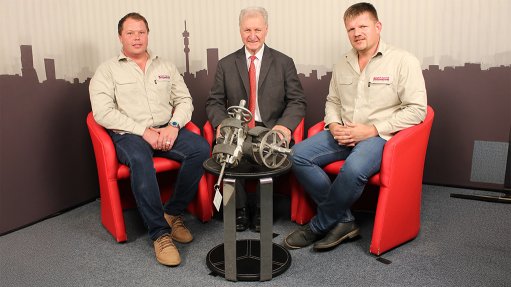Lightning protection requires careful consideration as digitalisation of mining expands
With the increased use of electronic and digital systems in modern mines comes the issue of lightning protection, which Wits Mining Institute's Professor Ian Jandrell suggests can be addressed in unique and simple ways, stemming from careful consideration and clear understanding.
He gave a keynote address during the yearly Wits Mining Institute seminar on September 29, and noted that increased workplace risk was placed on miners as they operated in an environment characterised by outdoor operations and volatile conditions.
He explained that, from a personnel perspective, a lightning safety plan was as important as a lightning protection system.
“[We] often think of lightning in terms of a protection system. We do not [often] think of having in place a plan to guide human beings on a site. It is not good just saying I have [lightning] protection on the building, so everyone should be fine; it is not like that at all.”
In addition, Jandrell said lightning could also find ways of getting underground, potentially harming personnel and damaging underground electronic and digital systems, as lightning’s electrical energy could travel through surface cables and even through different seams in the earth by means of a wave guide.
In terms of the challenges distributed electronic systems pose, he said that, in the modern operating environment, electronics were “going to be all over the show” and that, although a mining company may have lightning protection systems in place, they may not be adequate, or may have a fatal flaw at one point, which may compromise the entire, or large portions of, digital and electric systems.
In this regard, Jandrell suggested that, because different systems in different locations and buildings on a site were linked through a digital and/or electronic infrastructure, they may be at risk from a lightning strike anywhere on that specific site if careful consideration was not paid towards going beyond earthing.
In considering weak spots in terms of catching and handling a direct lightning strike at a mining site, he explained that electrical electromagnetic energy could be conducted in many different ways, such as through a copper cable, with light and even in a wave guide (similar to wave guides used in a microwave oven).
This meant that energy could even be conducted through hollow tubes – the key here being the use of different layers of material with different conductivities, different permitivitty’s and sometimes different permeabilities. “What this means is that if rock seams change from one type to the next, they can serve as wave guides and transmit energy quite far underground,” said Jandrell.
In terms of cabling, he noted that a commonly-held idea was that cabling was simply a means of getting “stuff” such as data or energy from one point to another, but that cabling also acted as a conductor and transmitter of energy from lightning between its different points as well.
In this regard, Jandrell emphasised the understanding that the whole concept of cabling and its protection had to include shielding, earth armouring of cables, discrete earthing conductors and the limitation of currents (lightning and fault currents).
Also, the bonding of metalwork and equipment associated with cabling needed to be considered. “You cannot think about metal infrastructure as being mechanical stuff – that [for instance] holds a conveyor belt, or carries a cable – you have got to start thinking of it in terms of being an electromagnetic screen,” he highlighted.
This brought Jandrell onto the topic of equipotentialisation. He explained that, when communication took place in a digital or electronic environment, there were different electrical potentials at points in systems which meant damage could be caused throughout such a system as a result of a weak spot.
In this respect, he said equipotentialisation and screening were critical aspects of an internal lightning protection system and natural components (sometimes even drainage pipes) should be used as effective screens against galvanic, electric and magnetic field coupling.
Also, Jandrell said, lightning protecting zones and the boundaries in particular must be defined and managed.
Article Enquiry
Email Article
Save Article
Feedback
To advertise email advertising@creamermedia.co.za or click here
Press Office
Announcements
What's On
Subscribe to improve your user experience...
Option 1 (equivalent of R125 a month):
Receive a weekly copy of Creamer Media's Engineering News & Mining Weekly magazine
(print copy for those in South Africa and e-magazine for those outside of South Africa)
Receive daily email newsletters
Access to full search results
Access archive of magazine back copies
Access to Projects in Progress
Access to ONE Research Report of your choice in PDF format
Option 2 (equivalent of R375 a month):
All benefits from Option 1
PLUS
Access to Creamer Media's Research Channel Africa for ALL Research Reports, in PDF format, on various industrial and mining sectors
including Electricity; Water; Energy Transition; Hydrogen; Roads, Rail and Ports; Coal; Gold; Platinum; Battery Metals; etc.
Already a subscriber?
Forgotten your password?
Receive weekly copy of Creamer Media's Engineering News & Mining Weekly magazine (print copy for those in South Africa and e-magazine for those outside of South Africa)
➕
Recieve daily email newsletters
➕
Access to full search results
➕
Access archive of magazine back copies
➕
Access to Projects in Progress
➕
Access to ONE Research Report of your choice in PDF format
RESEARCH CHANNEL AFRICA
R4500 (equivalent of R375 a month)
SUBSCRIBEAll benefits from Option 1
➕
Access to Creamer Media's Research Channel Africa for ALL Research Reports on various industrial and mining sectors, in PDF format, including on:
Electricity
➕
Water
➕
Energy Transition
➕
Hydrogen
➕
Roads, Rail and Ports
➕
Coal
➕
Gold
➕
Platinum
➕
Battery Metals
➕
etc.
Receive all benefits from Option 1 or Option 2 delivered to numerous people at your company
➕
Multiple User names and Passwords for simultaneous log-ins
➕
Intranet integration access to all in your organisation










